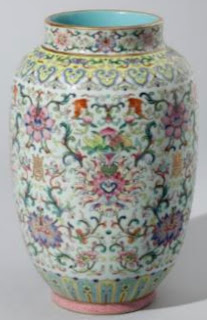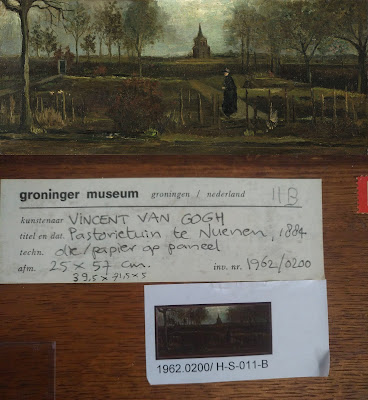 Anton Tkalec,Barbara and Lawrence Fleischman,Eugene Alexander,Getty Museum,Gianfranco Becchina,Leon Levy,Michael C. Carlos Museum,Michael Ward,Michel van Rijn,Museum of Fine Art Houston,Shelby White
Anton Tkalec,Barbara and Lawrence Fleischman,Eugene Alexander,Getty Museum,Gianfranco Becchina,Leon Levy,Michael C. Carlos Museum,Michael Ward,Michel van Rijn,Museum of Fine Art Houston,Shelby White
 1 comment
1 comment
Exploring Michael Ward and some peppered-about, possibly-problematic, pieces which might have provenance problems
No provenance history, prior to the Michael Ward 1986 sale, is listed for this artefact within the Getty Museum's digital accession record for this object.
Michael Ward sells a silver 4th century BCE Greek Bowl to Lawrence and Barbara Fleischman in 1987 which is later donated to the J. Paul Getty Museum in 1996 and given Object Number: 96.AM.89.1.
Michael Ward sells a silver 4th century BCE Oinochoe to Lawrence and Barbara Fleischman in 1987 which is later donated to the J. Paul Getty Museum in 1996 and given Object Number: 96.AM.89.2.
No provenance history, prior to the Michael Ward 1987 sale, is listed for this artefact within the Getty Museum's digital accession record for this object.
Michael Ward sells a silver 4th century BCE Ladle to Lawrence and Barbara Fleischman in 1987 which is later donated to the J. Paul Getty Museum in 1996 and given Object Number: 96.AM.89.3.
No provenance history, prior to the Michael Ward 1987 sale, is listed for this artefact within the Getty Museum's digital accession record for this object.
Michael Ward sells a silver 4th century BCE strainer to Lawrence and Barbara Fleischman in 1987 which is later donated to the J. Paul Getty Museum in 1996 and given Object Number: 96.AM.89.4.
Michael Ward sells a 150-250 CE Roman Statuette of the Lar/Genius of Aurelius Valerius and Base to Lawrence and Barbara Fleischman in 1987 which is later donated to the J. Paul Getty Museum in 1996 and given Object Number: 96.AB.200.
No provenance history, prior to the Michael Ward 1987 sale, is listed for this artefact within the Getty Museum's digital accession record for this object.
Michael Ward sells a Greek 550 BCE bronze Statuette of a Rider to Lawrence and Barbara Fleischman in 1990 which is later donated to the J. Paul Getty Museum in 1996 and given Object Number: 96.AB.45.
Ex private collection, Europe, assembled prior to early 1980s. European art market. Ex private collection, London, England, from ca. 1984-1985. Purchased by Emory University Museum of Art and Archaeology from Michael Ward [Ward & Company, Works of Art, Inc.], New York, New York.
No provenance history, prior to the Michael Ward 1992 sale, is listed for this artefact within the Getty Museum's digital accession record for this object.
Michael Ward donates a Greek Corinthian mid 6th century BCE Couchant lion to the Princeton University Art Museum.
Object No: y1993-42
No provenance details are listed for this artefact within the Princeton University Art Museum's digital accession record for this object.
Lot 3: 'a Greek silver-gilt repoussé plaque'. 'circa 540-525 BCE'. 'With winged Nike in a frontal chariot with facing quadriga, each pair of horses with heads turned to opposing sides, with finely incised details, bound lotus filling motifs, pierced around the edge for attachment, from an arm-guard'. 6.8 cm high. Unsold.Lot 5: 'a Greek bronze goat'. 'circa 5405 BCE'. 'From a vessel lid or rim, the goat recumbent with head turned to the right, with short pointed beard and upturned tail, finely incised details, the underside with lead infill, horns partially missing'. 7.6 cm high. Sold for 9,000 GBP.Lot 14: 'A Geometric Greek Bronze Seated Male Figure'. 'circa 750-700 BCE'. 'Seated on a stool with elbows resting on his knees and left hand to chin, with long instrument in right hand, finely detailed with striated fringe of hair at back of head and eyes rendered with depressed circles, on integral square seal base with four triangular divisions on underside, on wood mount'. 63 cm high. Sold for 28,800 GBP.
Lot 18: 'Three Laconian bronze helmeted warriors'. '6th century BCE'. 'Each animated nude standing figure standing with right arm outstretched to the side and left arm raised, with fists clenched, wearing tall crested helmet'. 6.4 cm high (max). Sold for 30,000 GBP.
The provenance is listed as:
The provenance is listed as:
Michael Ward reports in the New York Times that he nearly sold out his booth to new customers, American and European at the International Fine Art and Antique Dealers Show. Three of the objects mentioned at his booth are a mosaic sold to a museum, a fifth-century BCE Greek marble grave stele for $650,000 that depicts a man walking with a staff, and a $125,000 circa 800 BCE Egyptian bronze of Osiris.
According to the Michael L. Ward Criminal Complaint, from 1999 through 2022, Eugene Alexander had a money laundering scheme in which he sold looted antiquities to European and American collectors.
- they will not pursue any additional charges or arrests of Michael Ward for any crimes arising from his antiquities dealings or business transactions with Eugene Alexander;
- that Michael Ward will not be prosecuted in Italy for any crimes arising from his antiquities dealings or business transactions with Eugene Alexander;
- that no evidence developed by DANY or provided by Michael Ward to DANY will be used for any prosecution in Germany or any other country;
- and that, although Michael Ward's antiquities dealing and business transactions with Eugene Alexander will be described in any charging documents of Eugene Alexander, Michael Ward will not be named as a co-conspirator.
Ex coll. Jonathan Kagan, New York, New York. Ex coll. Damon Mezzacappa (ca. 1936-2015), New York, New York. Purchased by MCCM from Michael Ward [Ward & Company, Works of Art, Inc.], New York, New York.
Michael Ward sells a 4th century BCE Votive Relief with Banquet Scene to the Michael C Carlos Museum. Object Number 1999.011.003
The provenance is listed as:
With Michael Ward [Ward & Company, Works of Art, Inc.], New York, New York, from ca. 1996. Purchased by MCCM from Ward.
Michael Ward sells a 1-2nd century CE Roman Statue of Mercury to the Michael C Carlos Museum. Object Number 1999.011.005
The provenance is listed as:
Ex coll. Tempelberg Foundation, Vaduz, Liechtenstein. Purchased by MCCM from Michael Ward [Ward & Company, Works of Art, Inc.], New York, New York.
Michael Ward sells a 6th century BCE Votive Statuette of an Enthroned Athena to the Michael C Carlos Museum. Object Number 2000.006.003.
The provenance is listed as:
Accession Number: 2000.281.1 lists the provenance as:
Ward & Company Works of Art (American), New York (sold 2000)
Accession Number: 2000.281.2 lists the provenance as:
Accession Number: 2000.281.3 lists the provenance as:
Ward & Company Works of Art (American), New York (sold 1989)
Accession Number: 2000.281.4 lists the provenance as:
Ward & Company Works of Art (American), New York (sold 2000)
1 January 2000
The Art Newspaper published an ancient art market survey with dealers responses to the question of how many clients do you have who spend more than $50,000 per artefact.
Michael Ward replied that he has seen his client base in this price range and higher as doubling in number over the past five years. He counts forty clients in this price bracket.
The provenance is listed as:
Michael Ward gifts a 7th Century BCE Male Orant to the Michael C Carlos Museum. Object Number 2001.029.001.
The provenance is listed as:
Dietrich von Bothmer gifts a 480 BCE Red-Figure Amphora Neck Fragment with a Fight to the Michael C Carlos Museum. Object Number 2002.043.026.
The provenance is listed as:
A late first century BCE Roman parcel gilt silver Skyphos decorated with a Nilotic scene, some areas raised in relief, with one side centered by a grotesque man teasing a crocodile is consigned to Christie's and sells for $623,500.
The provenance is listed as:
London Art Market, mid 1990s.
with Ward & Company Works of Art, New York, 2000.
Michael and Stark Ward gift a Greek 6th Century BCE bronze Bronze handle of a patera (shallow basin) in the form of a youth to the Metropolitan Museum of Art. Accession Number: 2005.457.
No provenance details are listed for this artefact within the Metropolitan Museum of Art's digital accession record for this object.
According to the Edoardo Almagià sentencing document, the convicted dealer sold Michael Ward the following artefacts:
Michael Ward obtained more than 100 antiquities from Eugene Alexander between 2015 and 2019, 80 of which, according to the Michael L. Ward indictment, were clearly looted.



































































.jpeg)









































.png)

